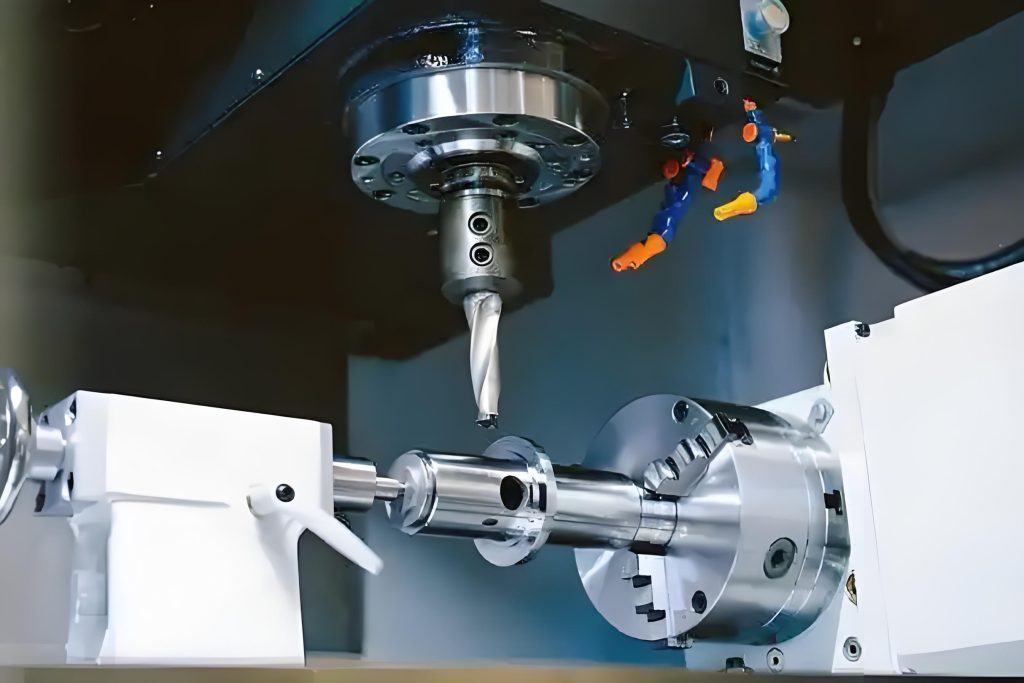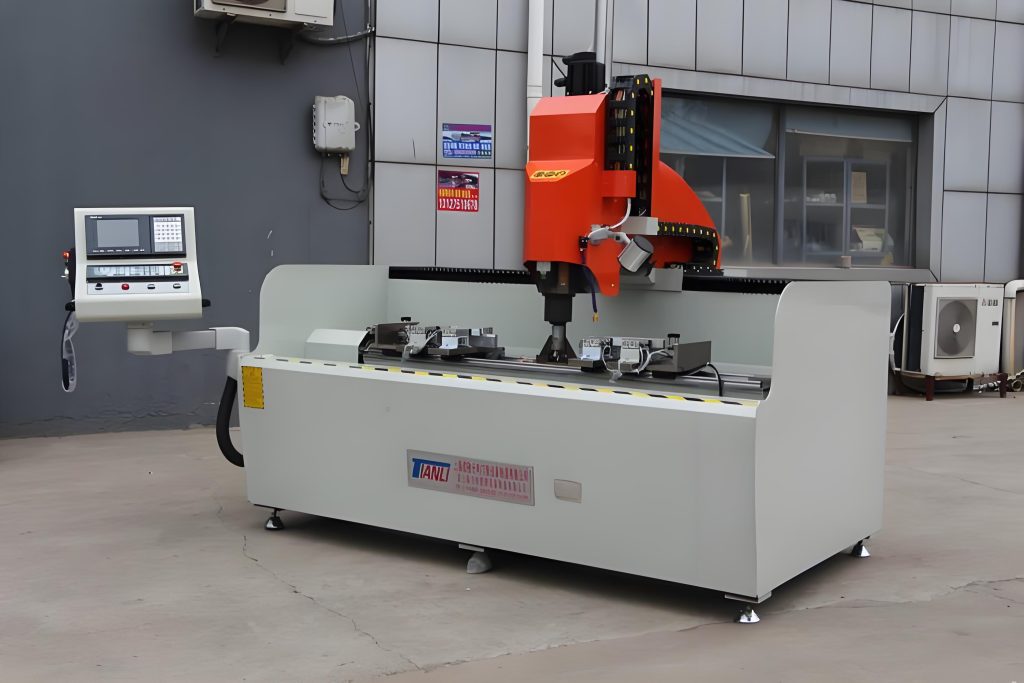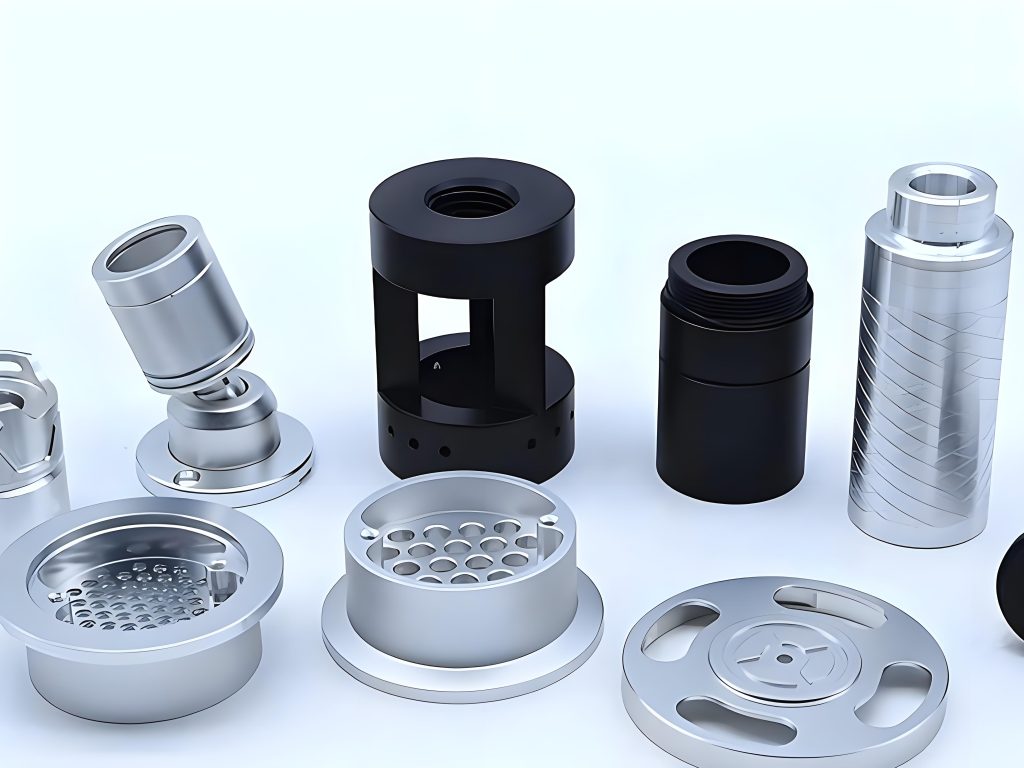1、Introduction to High-Precision Aluminum CNC Machining
High-precision aluminum CNC machining is a crucial process in modern manufacturing. It involves the use of computer-controlled machines to shape and finish aluminum components with exceptional accuracy and consistency. This technology has gained significant importance in various industries due to its ability to produce complex and intricate parts.
在当今的竞争制造环境中, precision is of utmost importance. High-precision aluminum CNC machining enables manufacturers to achieve micron-level accuracy, which is essential for applications in industries such as aerospace, 医疗设备, 和电子产品. 例如, 在航空航天业, components must meet strict tolerances to ensure the safety and performance of aircraft. 相似地, 在医疗领域, precision machining is required for the production of surgical instruments and implants.
The significance of high-precision aluminum CNC machining lies not only in its ability to produce accurate parts but also in its efficiency and flexibility. 拥有数控技术, manufacturers can quickly and easily program machines to produce different designs and shapes, making it ideal for small batch production and custom orders. 此外, the automation of the process reduces the need for manual labor, increasing productivity and reducing costs.
而且, high-precision aluminum CNC machining offers a wide range of benefits over traditional machining methods. It provides better surface finish, tighter tolerances, and higher repeatability. This results in improved product quality and reliability, 降低缺陷和返工的风险.
综上所述, high-precision aluminum CNC machining is a vital technology in modern manufacturing. Its ability to produce accurate, complex, and efficient parts makes it an essential tool for industries that require precision and quality. 随着技术的不断进步, we can expect to see even greater improvements in the precision and capabilities of aluminum CNC machining.

2、Process and Technology
2.1 设计和编程
In high-precision aluminum CNC machining, the design and programming stage is crucial. Engineers start by using Computer-Aided Design (计算机辅助设计) software to create a detailed three-dimensional model of the product. This model serves as the blueprint for the manufacturing process. 设计完成后, it is transferred to Computer-Aided Manufacturing (计算机辅助制造) 软件. The CAM software analyzes the design and generates G codes, which are specific instructions for the CNC machines. These G codes dictate the movement of the cutting tools, the speed of machining, and other parameters. 例如, a complex aluminum part for the electronics industry might require precise cuts and curves. The CAM software ensures that the G codes are optimized for maximum accuracy and efficiency.
2.2 Machining Process
CNC machines perform various machining operations based on the G codes. In high-precision aluminum CNC machining, common operations include milling, 转动, 和钻孔. Milling involves removing material from the aluminum workpiece to create complex shapes and surfaces. Turning is used to create cylindrical shapes. Drilling is used to create holes. The CNC machines are highly automated and can perform these operations with great precision. 例如, 在航空航天业, a CNC machine might be used to mill an aluminum component for an aircraft engine. The machine can achieve micron-level accuracy, ensuring that the part fits perfectly and functions as intended.
2.3 Monitoring and Feedback
Real-time monitoring and feedback play a vital role in ensuring a smooth machining process. During high-precision aluminum CNC machining, sensors and monitoring systems are used to track the performance of the CNC machine. These systems can detect issues such as tool wear, 振动, 和温度变化. If any abnormalities are detected, the system provides immediate feedback to the operator or the control system. This allows for timely adjustments to be made to ensure the quality and accuracy of the machining process. 例如, if a tool wears out during machining, the monitoring system can alert the operator to replace the tool. This helps to prevent defects and rework, saving time and costs. 此外, the feedback from the monitoring system can be used to optimize the machining process over time, improving efficiency and quality.
3、优点
3.1 高精度
High-precision aluminum CNC machining is renowned for its ability to achieve micron-level precision. This is crucial in industries where even the slightest deviation can lead to significant performance issues. 例如, 在电子行业, components need to be extremely precise to ensure proper functioning and compatibility. CNC machines use advanced technology and precise control systems to achieve this level of accuracy. With the ability to make cuts and shapes with such precision, manufacturers can produce complex and intricate parts that meet the highest quality standards.
3.2 一致性
One of the major advantages of high-precision aluminum CNC machining is the consistent quality of products it produces. Unlike traditional machining methods that may be prone to human error and variation, CNC machining ensures that each part is identical to the others. This is especially important in industries where quality control is critical, such as the medical and aerospace sectors. The consistent quality of CNC-machined products reduces the risk of defects and rework, saving time and costs.
3.3 自动化
Automation is a significant benefit of high-precision aluminum CNC machining. By reducing human intervention, CNC machines can operate continuously and with minimal errors. This not only saves labor costs but also increases productivity and efficiency. 此外, automated operation reduces the risk of human error, ensuring that each part is produced to the exact specifications. 例如, in large-scale production settings, CNC machines can run 24/7, producing a large number of high-quality parts in a short period.
3.4 灵活性
CNC systems offer remarkable flexibility in adapting to different product designs. With just a few changes to the programming, CNC machines can produce a wide variety of parts with different shapes, 尺寸, and features. This makes it ideal for small batch production and custom orders. 例如, a manufacturer can quickly switch from producing one type of aluminum part to another by simply changing the program. This flexibility allows businesses to respond quickly to market demands and customer requests.
3.5 Safety
与传统的加工方法相比, high-precision aluminum CNC machining is much safer. The automated operation reduces the need for workers to be in close proximity to dangerous machinery. This minimizes the risk of accidents and injuries. 此外, CNC machines are equipped with safety features such as emergency stop buttons and safety guards to further enhance workplace safety. In industries where safety is a top priority, such as manufacturing and construction, CNC machining provides a safer alternative to traditional methods.

4、应用领域
4.1 航天
在航空航天领域, high-precision aluminum CNC machining plays a crucial role. Components such as engine parts, fuselage structures, and satellite components require extremely high precision and tight tolerances. CNC machining enables the production of complex geometries with micron-level accuracy. 例如, turbine blades for aircraft engines must be precisely shaped to ensure optimal aerodynamic performance and efficiency. Aluminum is often chosen for its lightweight properties, which help reduce fuel consumption and increase the payload capacity of aircraft. 此外, the high strength-to-weight ratio of aluminum makes it an ideal material for aerospace applications. High-precision aluminum CNC machining can also produce parts with consistent quality, reducing the risk of failures in critical aerospace systems.
4.2 汽车制造
In the automotive manufacturing sector, high-precision aluminum CNC machining is used to produce engine components, body panels, and interior parts. The lightweight nature of aluminum helps improve fuel efficiency and reduce emissions. CNC machining allows for the production of complex shapes and tight tolerances required for these components. 例如, cylinder heads and engine blocks can be precisely machined to ensure proper fit and function. The automotive industry also demands high-volume production, and CNC machining offers the flexibility to produce large quantities of parts quickly and efficiently. 而且, the consistent quality of CNC-machined parts helps ensure the reliability and performance of vehicles.
4.3 Medical Equipment
In the manufacturing of medical devices, high-precision aluminum CNC machining is essential. 手术器械, 植入物, and diagnostic equipment require extremely accurate and sterile components. Aluminum is often used due to its biocompatibility and corrosion resistance. CNC machining can produce parts with tight tolerances and smooth surfaces, reducing the risk of infection and improving patient safety. 例如, orthopedic implants must be precisely shaped to fit the patient’s anatomy and ensure proper healing. The ability to customize parts through CNC machining is also crucial in the medical field, as each patient may have unique requirements.
4.4 Mold Making
High-precision aluminum CNC machining is widely used in mold making for various industries. Molds are used to produce plastic, rubber, and metal parts. CNC machining allows for the creation of complex molds with high accuracy and surface finish. 例如, injection molds for plastic parts require precise dimensions and smooth surfaces to ensure the quality of the molded products. Aluminum molds are often preferred due to their lightweight nature and good thermal conductivity, which can improve the molding process. 此外, CNC machining can produce molds quickly, reducing the lead time for product development.
4.5 Furniture Manufacturing
In furniture manufacturing, high-precision aluminum CNC machining is used to enhance the design and functionality of furniture. Aluminum components can be used to create unique and modern designs, adding aesthetic value to furniture. 例如, aluminum frames for chairs and tables can be precisely machined to create sleek and stylish designs. CNC machining also allows for the production of custom furniture pieces to meet the specific needs and preferences of customers. 此外, aluminum is a durable material that can withstand wear and tear, making it ideal for furniture that is intended to last.
5、未来趋势
5.1 Application of Artificial Intelligence
将来, artificial intelligence is expected to play a significant role in high-precision aluminum CNC machining. AI-powered systems will be able to analyze large amounts of data from previous machining processes and use this information to optimize future operations. 例如, AI can learn the optimal cutting parameters for different materials and geometries, resulting in improved efficiency and precision. By continuously learning and adapting, these intelligent systems will be able to self-optimize the machining process, 减少浪费并提高生产力. 此外, AI can detect potential issues before they occur, such as tool wear or machine malfunctions, and take preventive measures to avoid downtime.
5.2 Integration of Internet of Things
The integration of the Internet of Things (物联网) will enable remote monitoring and management of high-precision aluminum CNC machines. Sensors embedded in the machines will transmit real-time data on machine performance, 刀具磨损, and production status to a central control system. This data can be accessed remotely by operators and maintenance personnel, allowing for proactive maintenance and troubleshooting. 例如, if a tool is approaching the end of its life, the system can send an alert to the operator, who can then schedule a tool change before it fails. IoT integration will also enable better coordination between different machines and processes, optimizing the overall production flow. 而且, data analytics can be used to identify patterns and trends, leading to further improvements in efficiency and quality.
5.3 Application of New Materials
随着技术的进步, new materials are emerging that offer unique properties and challenges for high-precision aluminum CNC machining. 例如, composite materials and advanced alloys may require different cutting tools and machining parameters. CNC machining will need to adapt to handle these new materials, ensuring that the same level of precision and quality can be achieved. 此外, the development of materials with enhanced properties, such as higher strength or better corrosion resistance, will open up new applications for CNC-machined parts. Manufacturers will need to stay updated on the latest material developments and invest in research and development to optimize their machining processes for these new materials.
5.4 Green Manufacturing
The move towards more environmentally friendly machining methods is a growing trend in the manufacturing industry. In high-precision aluminum CNC machining, green manufacturing can be achieved through several means. 例如, energy-efficient machines can be used to reduce power consumption. 此外, recycling and reusing waste materials generated during the machining process can minimize environmental impact. Water-based coolants and lubricants can replace traditional petroleum-based products, reducing emissions and waste disposal issues. 而且, optimizing machining processes to reduce material waste and energy consumption will contribute to a more sustainable manufacturing approach. As consumers and regulatory bodies place increasing emphasis on environmental responsibility, green manufacturing will become an essential aspect of high-precision aluminum CNC machining.

6、结论
High-precision aluminum CNC machining is a dynamic and evolving field that continues to drive innovation in various industries. 当我们展望未来时, the application of artificial intelligence, integration of the Internet of Things, use of new materials, and adoption of green manufacturing practices will shape the landscape of this technology.
The application of artificial intelligence holds great promise for improving efficiency and precision. With AI-powered systems, manufacturers can optimize cutting parameters, detect potential issues in advance, and self-optimize the machining process. This will lead to reduced waste, 提高生产率, and enhanced product quality.
The integration of the Internet of Things will enable remote monitoring and management of CNC machines, allowing for proactive maintenance and better coordination between different processes. This will improve overall production flow and reduce downtime.
The emergence of new materials will present challenges and opportunities for high-precision aluminum CNC machining. Manufacturers will need to adapt their processes to handle these materials and take advantage of their unique properties to expand the applications of CNC-machined parts.
Green manufacturing is becoming increasingly important as the world focuses on environmental sustainability. In high-precision aluminum CNC machining, 节能机器, recycling of waste materials, and use of eco-friendly coolants and lubricants can contribute to a more sustainable approach.
综上所述, high-precision aluminum CNC machining is a vital technology that will continue to play a crucial role in modern manufacturing. 随着技术的进步, we can expect to see even more exciting developments in this field, bringing benefits to industries and society as a whole.






